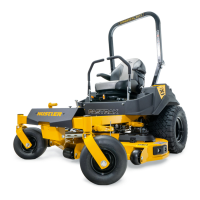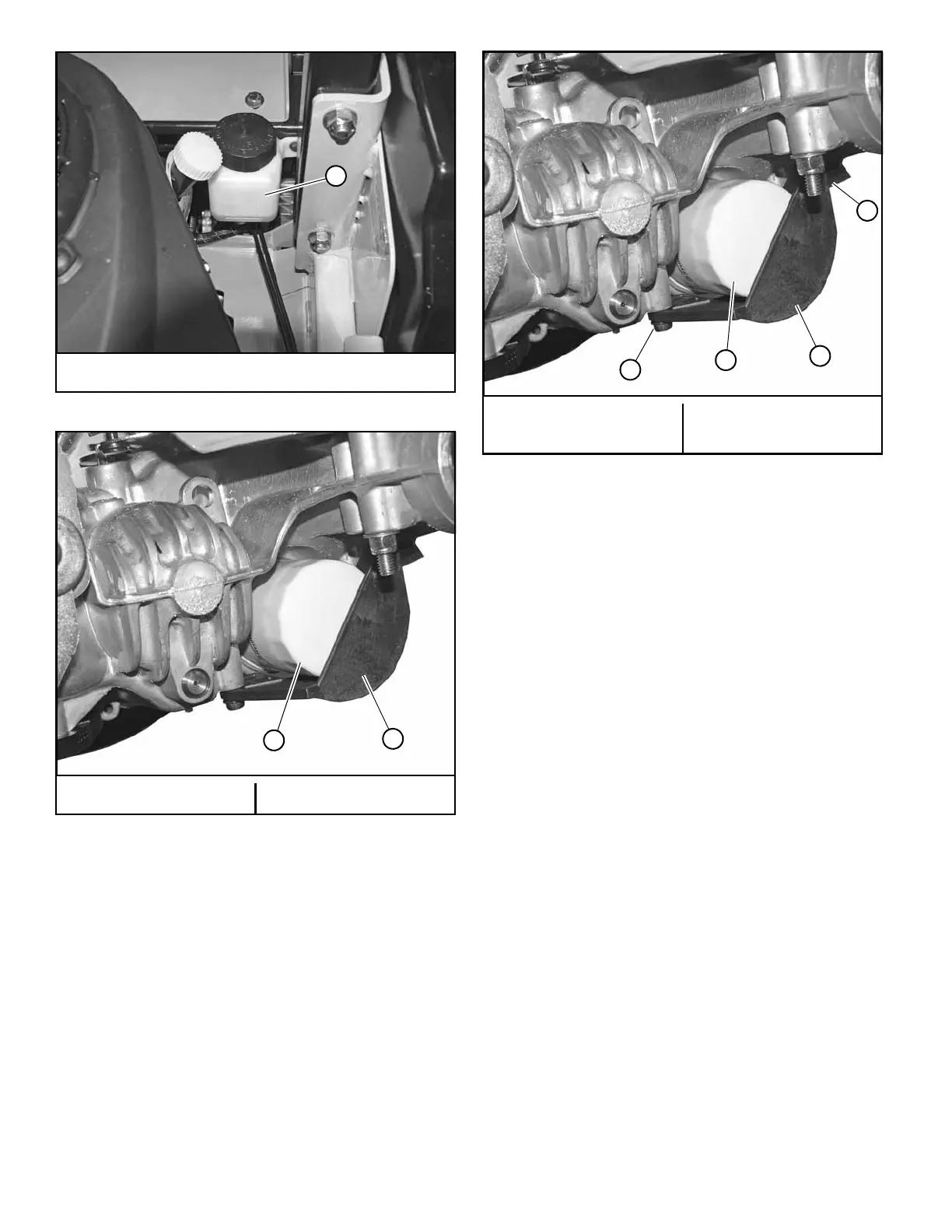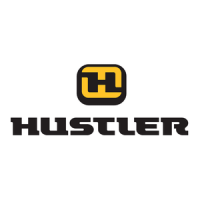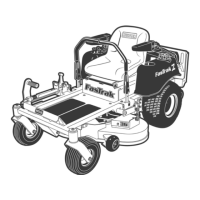REV C 4-6 121363
• Place the steering control levers in the park brake
position.
• Disengage the deck clutch.
• Remove the ignition switch key.
• Disconnect the negative battery cable.
2. Remove the three 1/4” filter guard screws and filter
guard. Clean any loose debris from around the filter.
Figure 4-12
3. Place an oil drain pan beneath the oil filter and remove
the oil filter from the transaxle.
4. After the oil has been drained, wipe the filter base sur-
face off and apply a film of new oil to the gasket of the
new replacement filter.
5. Install the new filter by hand, turn 3/4 to one full turn
after the filter gasket contacts the filter base surface.
6. Re-install the filter guard with three 1/4” screws.
Torque the screws to 65 in.–lbs. each. Figure 4-12
7. Repeat steps 2–6 for the opposite side transaxle.
8. Drain oil filters of all free flowing oil prior to disposal.
Place used oil in appropriate containers.
9. IMPORTANT: Remove the top port plug from both tran-
saxles prior to filling with oil. This will allow the tran-
saxles to vent during oil fill. Figure 4-13
10. Remove the cap from the transaxle's expansion tank.
11. Fill with 20W50 motor oil until oil just appears at the
bottom of each transaxles top port (approximately 2
qts. per transaxle). Install the top port plug into each
transaxle. Torque plugs to 180 in.–lbs. Clean up any
oil that leaked from the ports. Figure 4-13
12. Continue to fill the transaxles through the expansion
tank until the “Full Cold” line is reached on the expan-
sion tank.
13. Re-install the expansion tank cap by hand. Be careful
not to overtighten.
14. Proceed to the purge procedure.
IMPORTANT: Purging procedures must be followed after
changing the oil and filter. Refer to the Purging Procedure sec-
tion for detailed information.
IMPORTANT: When washing the mower, direct the spray
away (especially if using a power washer) from the transaxle’s
seals to prevent water intrusion and to ensure component per-
formance.
Purging Procedure
Due to the effects air has on efficiency in hydrostatic drive
applications, it is critical that air is purged from the system.
A. Expansion tank
Figure 4-10
A. Filter B. Filter guard
Figure 4-11
A. Screw
B. Filter
C. Filter guard
Figure 4-12

